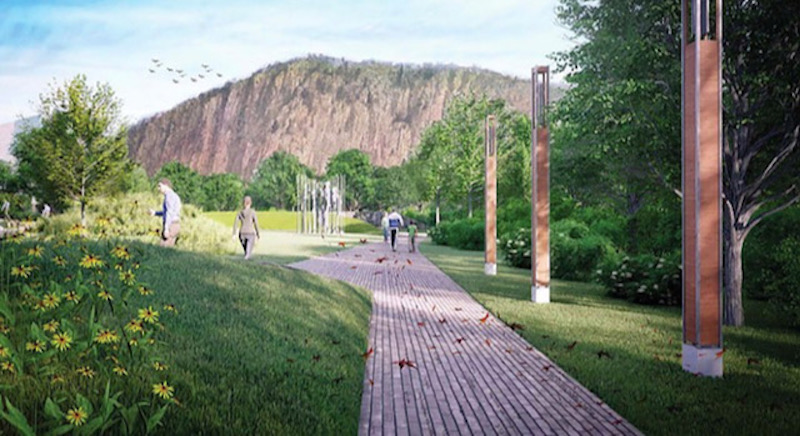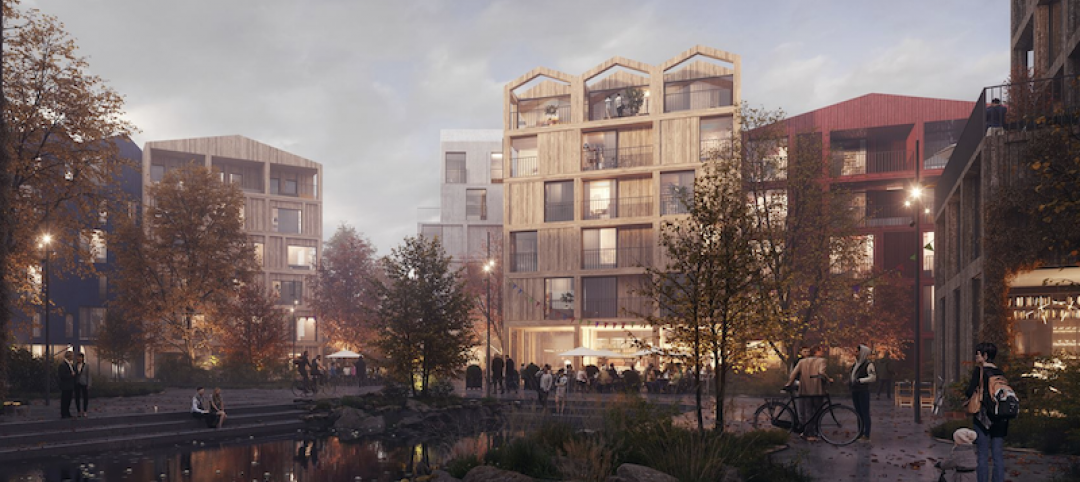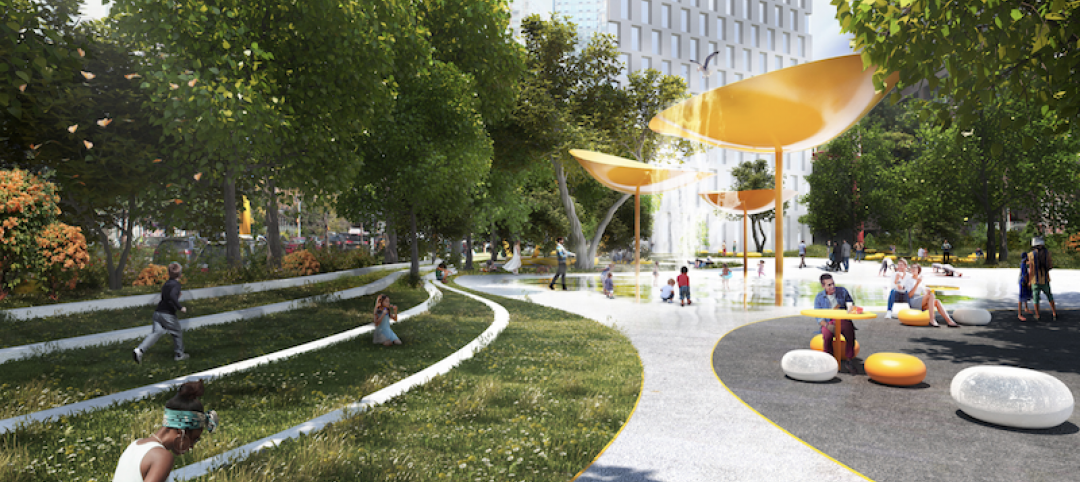Svigals + Partners, an architecture firm that designed the new Sandy Hook Elementary School, has partnered with a group of concerned mothers in New Haven, Conn. to design a Memorial Garden in honor of victims of gun violence.
The garden will provide a path flanked by engraved stone pavers that include the ages and dates of individuals killed in gun violence incidents in New Haven since 1980. The path will lead past a sculpture, titled Lost Generation, before culminating in a circular plaza with stone seating areas and flowering plants.
"The Lost Generation sculpture serves as a reminder of both the fragility and strength that exists within families and communities,” Says Marissa Mead, RA, LEED AP, Director of Art at Svigals + Partners and the design lead for the memorial. “Figurative voids in the piece illustrate the ever-present sense of absence when loved ones are lost to tragedy, and allude to the idea that death has a compounded influence on both current and future generations.”
Near the center plaza, memory tiles will be engraved with images or memories of lost loved ones. Stepped seating will be available throughout the park and a row of lamp post wind chimes near the park’s entrance will help mask traffic noise from Valley Street. The park may also include a footbridge connection to the nearby West Rock trail project.
Marlene Miller Pratt, a New Haven school teacher whose 18-year-old son was killed in a gun violence incident in 1988, led the efforts to build the memorial garden. The park could be completed and open to the public as early as summer 2019.
Related Stories
Urban Planning | Dec 6, 2020
Ford lays out plans for mobility innovation district in Detroit
Its centerpiece is an abandoned train depot whose architecture and decay reflect two sides of this city’s past.
Resiliency | Nov 5, 2020
CRE investors are concerned that cities aren’t resilient enough for climate change
A new ULI-Heitman report states that the biggest challenge to valuation is measuring urban risk mitigation.
Multifamily Housing | Oct 22, 2020
The Weekly show: Universal design in multifamily housing, reimagining urban spaces, back to campus trends
BD+C editors speak with experts from KTGY Architecture + Planning, LS3P, and Omgivning on the October 22 episode of "The Weekly." The episode is available for viewing on demand.
Urban Planning | Jan 23, 2020
Unicorn Island’s first building nears completion
The building is the first on the 67-hectare island.
AEC Tech | Jan 16, 2020
EC firms with a clear ‘digital roadmap’ should excel in 2020
Deloitte, in new report, lays out a risk mitigation strategy that relies on tech.
Urban Planning | Jan 13, 2020
Henning Larsen designs all-timber neighborhood for Copenhagen
The project hopes to set a standard for how modern communities can live in harmony with nature.
Urban Planning | Jan 8, 2020
BIG partners with Toyota to unveil Toyota Woven City
It will be the world’s first urban incubator dedicated to the advancement of all aspects of mobility.
Urban Planning | Jan 3, 2020
BIG unveils Downtown Brooklyn Public Realm vision
BIG and WXY Architects are co-leading the project.
Urban Planning | Nov 22, 2019
Culdesac Tempe will be the country’s first from-scratch, car-free neighborhood
The neighborhood is scheduled to launch in 2020.
Sustainability | Nov 8, 2019
South Korea plans to build three hydrogen-powered cities by 2022
The Ministry of Land, Infrastructure, and Transport is in charge of the project.

















